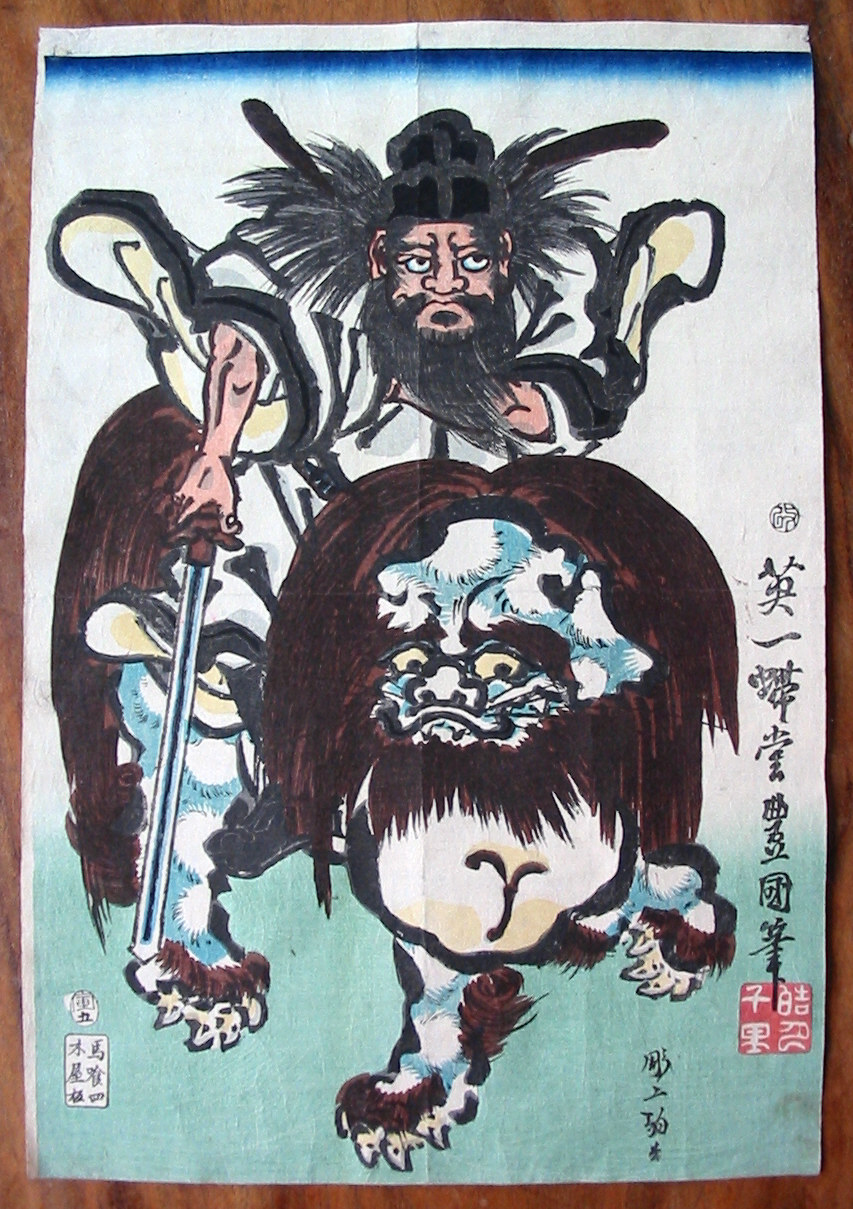
|
Ukiyo-e Prints浮世絵版画 |
| Port Townsend, Washington |
|
UTAGAWA TOYOKUNI III 三代歌川豊国 さんだい.うたがわ.とよくに 1786-1865 |
|
SUBJECT: Shoki astride a lion |
|
DATE: 1854, 5th Month Ansei 1 安政1 |
|
PUBLISHER: Kiyasojiro 木屋宗次郎 きやそうじろう |
|
SIGNATURE: Hanabusa Itchō [something] Toyokuni hitsu
英一蝶(?)豊国筆 |
| SIZE: 14 1/2" X 9 3/4" |
|
SOLD! THANKS! |
|
I want to thank our correspondent E for assisting me with this page. |
|
HANABUSA ITCHŌ (1652-1724) and the KUNISADA CONNECTION |
|
|
|
When Toyokuni I died in 1825 Kunisada was miffed that he was not given the honor of receiving his master's name. Instead Toyoshige, Toyokuni's son-in-law, became his successor and began calling himself Toyokuni II. Kunisada refused to recognize this change. He was convinced that he was far more worthy of the name. In fact, many years later he tried to usurp the name of Toyokuni II and was not discouraged in this by his family and friends. They even continued to refer to him that way after his death although you and I know him as Toyokuni III.(1)
Toyoshige was not a bad artist, but the general consensus is that Kunisada was much better. Sebastian Izzard noted Kunisada's displeasure at the events surrounding Toyokuni I's death. "Disappointed at being passed over, Kunisada evidently decided to try something new. He began to study painting under Hanabusa Ikkei (1749-1844), fourth-generation head of the Hanabusa school. The name Kōchōrō, which Kunisada introduced into his signature in 1825, takes the character chō (butterfly) from Itchō, the name of the founder of he Hanabusa school."(2) |
|
|
|
Kunisada rarely invoked the name of Hanabusa Itchō in any of his signatures. In fact, as far as I can tell, this particular example may be unique. As yet the fourth kanji character remains unidentified. It does not seem to appear in any other "Hanabusa Itchō" Kunisada signature examples. |
|
|
|
1. Kunisada's World, Sebastian Izzard, Japan Society, Inc., in collaboration with the Ukiyo-e Society of America, 1993, pp. 35-6. 2. Ibid., p. 127, cat. #59. |

 HOME
HOME